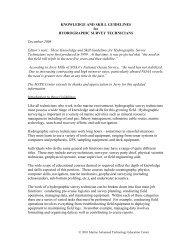

Department of Defense (DoD) intends to enhance and sustain its training and testing assets and also optimize its stewardship of natural resources through the development and application of an ecosystem-based management approach on DoD installations. These data are being used by both Marine Corps Bases to manage drinking-water supplies and plan investigations of hazardous-waste = ,Ĭritical military training and testing on lands along the nation’s coastal and estuarine shorelines are increasingly placed at risk because of encroachment pressures in surrounding areas, impairments due to other anthropogenic disturbances, and changes in climate and sea level. The hydrogeologic framework at Camp Lejeune was mapped by using 100 miles of continuous single-channel, marine seismic-profiling data that were correlated with land-based borehole geophysical and lithologic data from 180 water-supply, monitoring, and stratigraphic test wells.

The geometry of areas of missing confining units at the southern end of Cherry Point Marine Corps Air Station was mapped by using land seismic-reflection compressional (P) waves, marine seismic profiling, and borehole-geophysical and lithologic data from more than 100 water-supply and monitoring wells. Marine Corps Bases in the Coastal Plain Province of North Carolina was obtained by using a combination of high-resolution land seismic reflection, continuous marine seismic profiling, and borehole geophysics, that included vertical seismic profiling. This eliminates a separate data logger for PAR and enables long-term studies without requiring a surface data logger.Ĭhoose between single or dual, wiped or unwiped LI-COR 2π PAR sensors or a single unwiped LI-COR 4π PAR sensor.Hydrologic information for ongoing environmental studies at two U.S.

PAR sensors are powered by the sonde and PAR data is added to the data stream of the water quality sonde. YSI offers several PAR systems that can be directly integrated into existing or new 6600 multiparameter sondes. PAR levels vary due to the natural attenuation by water and the presence of absorbing algal pigments, dissolved organic material, and scattering by particles.YSI measures PAR using a single or dual Li-Cor sensor attached to a YSI 6600 water quality sonde for continuous field monitoring. Also, high levels of PAR can indicate photoinhibition. PAR measurements are important because the rate of photosynthesis directly relates to the penetration of light throughout the water column.


 0 kommentar(er)
0 kommentar(er)
